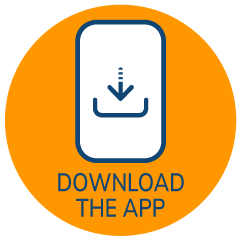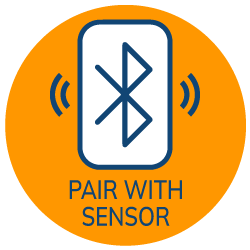How Does The Sunrise Sensor Work?
How to use the Sunrise test?
1. Download the Sunrise.Sleep app
Click the links below to download the Sunrise.Sleep app for Apple App Store or Google Play Store.
2. Create a Sunrise account and login.
After you open the app, follow the steps to set up your account and answer the sleep questionnaire.
3. Pair your sensor and sleep comfortably.
Right before bed, follow the app to pair your sensor and stick it on your chin optionally using the extra adhesive.


FAQs
How can I get a sensor?
The Sunrise home sleep apnea test is available to order online today.
How do I attach the sensor?
The sensor comes with two different adhesives: a double-sided adhesive placed between the sensor and your chin and a second adhesive bandage that is placed over the top of the sensor to secure the sensor through the course of the night.
How can I start a sleep test with the sensor?
Once you have received a sensor, please open the App, scan the QR code provided, push the ‘+’ button on the sensor, place it on the chin with the adhesives, and launch the recording from the App. You will find more detailed instructions in the Quick Start Guide provided with the box.
What happens after the Sunrise home sleep apnea test?
A sleep specialist reviews the results. They will determine if you suffer from a sleep disorder and what equipment or treatment you need. You will also be able to access your results the next morning after sleeping with the sensor, and you will be able to view your results via the app and share the report with your Health Care Professionals or GP. See Sunrise Reporting
Is the Sunrise sensor TGA approved?
Yes, the Sunrise version 1 and version 2 sensors are TGA approved for diagnosing sleep apnea in adults aged 18 years and above.
What does the Sunrise sensor measure?
The Sunrise sensor measures 6 signals including airflow from the nose and mouth, mandibular jaw movements (via an accelerometer and gyroscope), pulse rate, SpO2, and head position.
Does the sensor allow for multi-night testing?
Yes, the Sunrise v2 mult-night sensor allows for up to 3 sleep sessions for 10 hours each over the course of a two-week period. These sleep sessions can be consecutive or non-consecutive, but please note the reporting only stores the most recent sleep data.
Can the Sunrise sensor differentiate between obstructive and central events?
Yes, the reports provides cAHI and oAHI. The raw data marks periods of obstruction when the jaw opens (mandible drops as measured by the accelerometer) while at the same time there is a significant increase in the amplitude of the mandibular movements denoting increasing effort to breathe (rotation of the jaw as measured by the gyroscope). Central events also reveal a jaw opening (mandible drops as measured by the accelerometer) while simultaneously there is a decrease or complete absence of the amplitude of the mandibular movements (absence or significant decrease in the rotation of the jaw as measured by the gyroscope).
How does the Sunrise sensor differentiate wake from sleep?
Wakefulness is clearly discriminated and can be confirmed via visual inspection of the raw data of mandibuar jaw movements due to their highly variable, often fast, and unpredictability in both amplitude and frequency. This was demonstrated in a validation set of 226 simultaneous synchronized PSG recordings with a sensitivity of 88% (95% CI, 71–99%) and a specificity of 94% (85–98%).
How does the Sunrise automatic scoring compare to PSG for REM sleep detection?
During REM sleep, mandibular jaw movements are preserved but show marked variability in amplitude and frequency that is characteristically unpredictable. The algorithm performed well in detecting REM sleep with a sensitivity of 83% and a specificity of 89% when compared to simultaneous PSG on 1026 patients.






